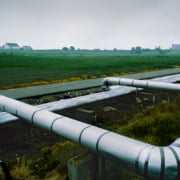D.C. Circuit Rejects Challenge to CERCLA Site Listing
On July 8, 2022, the U.S. Court of Appeals for the District of Columbia Circuit (D.C. Circuit) rejected a challenge to the listing of a groundwater contamination plume on the National Priorities List (NPL). The decision in Daikin Applied Americas, Inc. v. EPA reaffirms the difficulty that attends challenging NPL listings as well as the wide latitude Congress granted the Environmental Protection Agency (EPA) under the Comprehensive Environmental Response, Compensation, and Liability Act (CERCLA) to define the scope of Superfund sites during the listing process. While Daikin is a fact-intensive decision, Petitioners’ efforts to reduce the size and scope of the site being considered for NPL listing and to cast doubt on EPA’s analysis are not unlike other listing challenges. Thus, the case serves as a reminder of the uphill battle parties have in challenging EPA’s decision to list a site.
CERCLA grants EPA the authority to list contaminated sites on the NPL, making those sites eligible for CERCLA-funded investigation and remediation. EPA’s system for making NPL decisions is the Hazard Raking System (HRS). Through the HRS, the agency evaluates a site’s relative potential to pose a threat to human health or the environment using a 100-point scale. EPA does this by examining “likelihood that a site has released or has the potential to release hazardous substances into the environment”; “characteristics of the waste (e.g. toxicity and waste quantity)”; and “people or sensitive environments (targets) affected by the release.” EPA can apply this framework to a facility (that is, the place where contamination has come to rest), but under certain circumstances — such as where a plume of contamination is comingled and has multiple potential sources — the plume of contamination itself can be scored as a single “site.” While listing does not necessarily mean a site will be the subject to remediation, it does mean that EPA will study the site in depth. Generally speaking, once listed, a site will stay on the NPL for many years. There are negative repercussions to this, including substantially impairing a site’s property value.
Daikin involved a groundwater plume covering two Minnesota cities, St. Louis Park and Edina. In 2019, EPA proposed to list the entire groundwater plume, which crossed four different aquifers between the two cities, as a single site. Because the contamination in these four aquifers was comingled and because there were so many potential sources, EPA declined to identify a single source, thereby allowing the agency to list the plume itself as a source and score it as a whole. The petitioners in Daikin challenged the listing in comments, taking issue with EPA’s decision to treat the plume as a single site instead of trying to identify and score individual sources of contamination. Despite these comments, EPA finalized the NPL listing of the full plume.
Petitioners then challenged the listing in the D.C. Circuit. Raising many of the same issues they raised in their comments, Petitioners asserted that EPA’s listing was arbitrary and capricious because EPA failed to consider potential sources of contamination and mistakenly concluded that the four aquifers were interconnected. The D.C. Circuit rejected these arguments. First, the court concluded that EPA appropriately concluded that contamination was comingled and that EPA had no obligation to identify each potential source of contamination under such circumstances. Second, the court found that EPA had appropriately followed its own guidance in concluding that the four aquifers were interconnected.
Challenging EPA’s decision to list a site on the NPL is extremely difficult. Although some parties have been successful over the history of CERCLA, those parties are few and far between. This is, in part, because NPL listing is a preliminary step that does not determine the ultimate remedy (that comes later — often much later). Moreover, EPA has broad leeway to define sites as it sees fit before preparing its HRS calculation. Nonetheless, it is possible to contest NPL listings and, through that process, to potentially shift the agency’s focus and limit the potential issues and scope of the site. Doing so can pay dividends for PRPs later on the process.
This post is as of the posting date stated above. Sidley Austin LLP assumes no duty to update this post or post about any subsequent developments having a bearing on this post.


